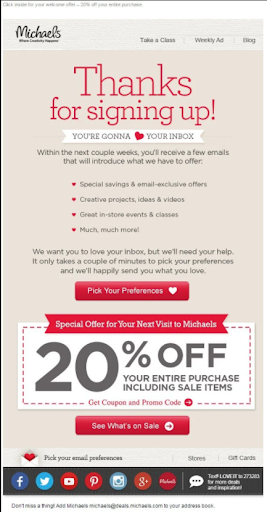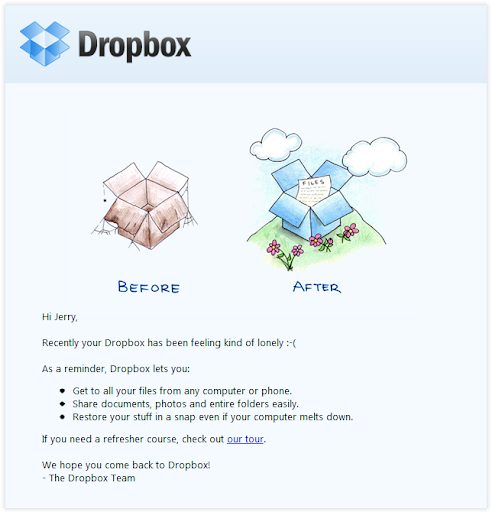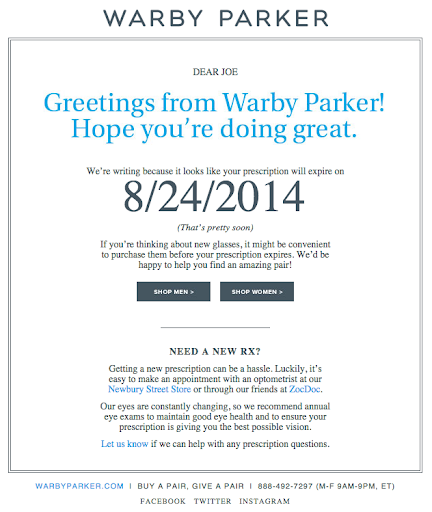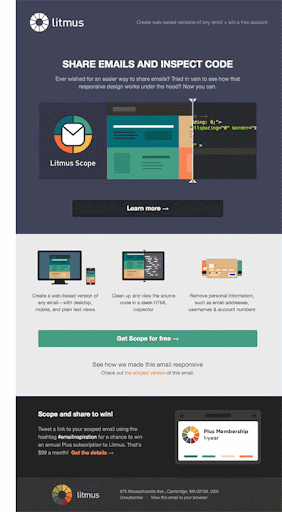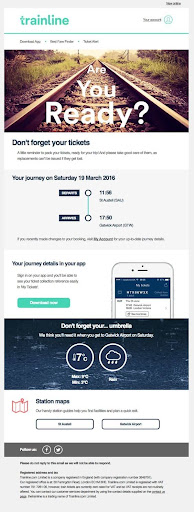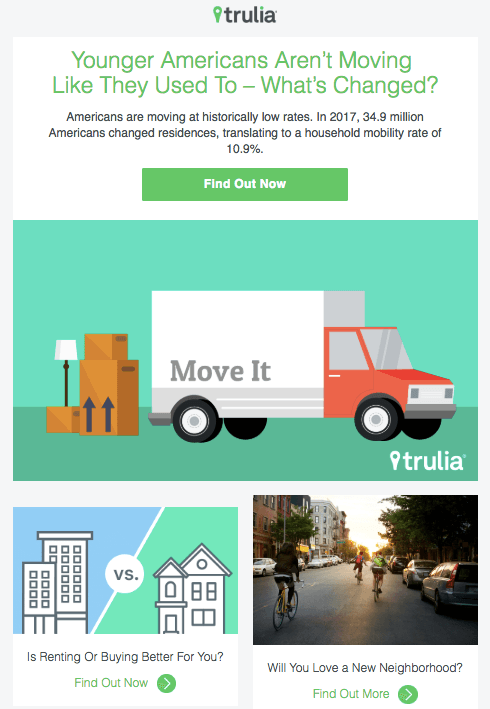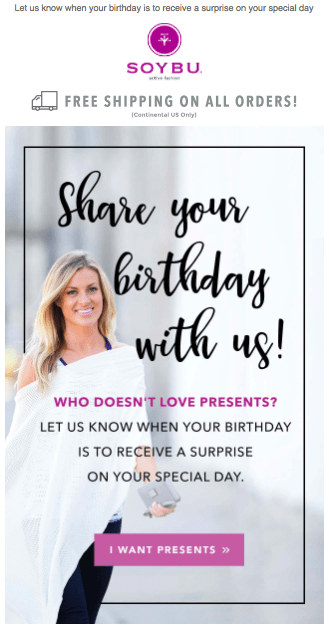Your Salesforce email marketing options – MassMailer Vs Pardot
You may find the bombardment of information through many new channels to be overwhelming, but email still rules. As a marketer, your primary focus should be emailing. But among the buzz, which one can suit your business better? Let’s compare MassMailer Vs. Pardot here.
There are 4 billion daily email users. This number is expected to climb to 4.6 billion by 2025. (Statista, 2021)
Check out what features you prefer for your business operations based on the list below.
Integration with Salesforce:
You may be aware that native apps can have an advantage and MassMailer is a native Salesforce app. The advantage of native apps is that you do not need any APIs to integrate with Salesforce. Moreover, data from Native apps are stored in your Salesforce instance. That reduces your worry about any extra security. MassMailer is a native app that delivers a seamless experience.
Pardot is a B2B lead nurturing and marketing automation platform but not just an email marketing tool. You can integrate Pardot with Salesforce using a specially designed connector.
Email Authentication:
The success of your email campaigns rests on sending campaigns to valid email addresses. Both MassMailer and Pardot support email authentication. Pardot authenticates domain through the Sender Policy Framework (SPF). DomainKeys Identified Mail (DKIM). MassMailer also follows the same industry best practices to authenticate.
Vanity Tracker Domain for links:
Mass mailer and Pardot support Vanity Tracker Domain for links. The feature is helpful when you send email content, and images may get hosted in URLs defined by the email tools.
IP Address:
You get a dedicated IP address with MassMailer. An IP address identifies spam. and the email sender’s reputation. Having a dedicated IP address protects your reputation and reliable email delivery.
You get a shared IP address with Pardot by default. You need to purchase a dedicated IP address as per your needs.
View Email activity:
Viewing email activity is of primary importance for your marketing. Here both the applications do not disappoint in this critical area. In MassMailer, you can configure viewing of emails sent in Salesforce Activities. Alternatively, you can view details of emails sent in the MassMailer Email Status Related List or the Lightning Component in Salesforce.
Pardot also shows Email sends in Salesforce activities. You can include it in the Engagement History Lightning Component too. See what works best for your teams.
Send Mass Emails:
Probably a favorite tool in your marketing strategy – sending mass emails. MassMailer and Pardot support sending mass emails to email lists of your choice. Both the applications are suitable for email marketing initiatives and perform reliably well.
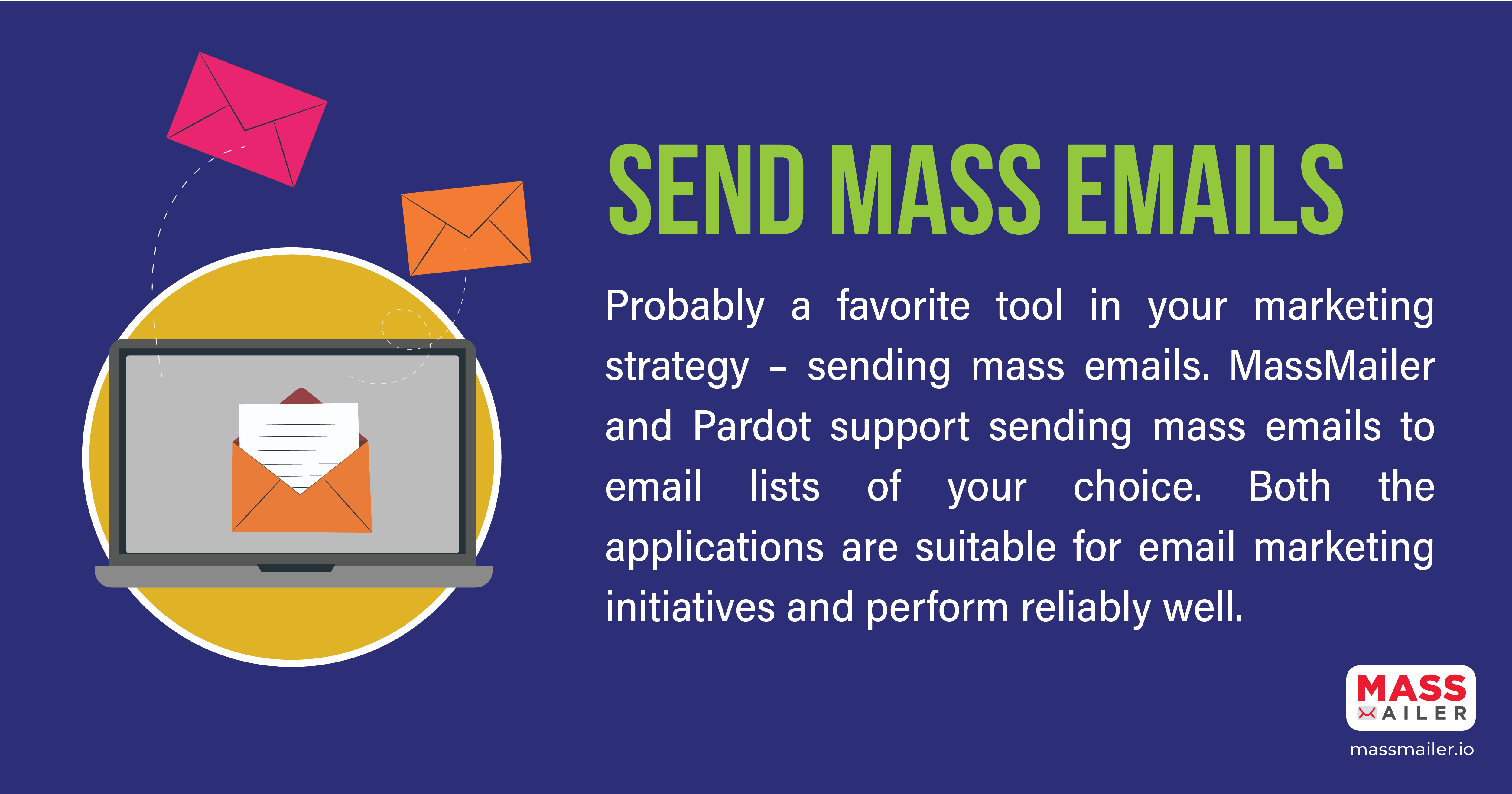
Send Mass Emails – MassMailer vs Pardot
One to one Emails:
At times, you need to send a one-to-one email, and here both MassMailer and Pardot support sending a single mail.
Email Validation and Verification:
Sending mails to wrong addresses or irrelevant people impacts your brand reputation. Email Validation and Verification features are available in MassMailer, and there are many statuses. You can have this feature work with Salesforce too.
Unfortunately, Pardot does not support this critical feature.
Attachments:
At times you may need to send marketing collateral through email attachments; MassMailer supports attachments in emails. In Salesforce, one can email file attachments with MassMailer.
Pardot has limitations in that it supports email attachments, but only if you use Salesforce Engage Tool with appropriate licenses, which can be a dampener.
Dynamic Attachments:
Dynamic attachments significantly reduce the time spent in email marketing. With MassMailer you can attach files dynamically from any object and send a mass email in Salesforce.
Pardot lacks the dynamic file attachment feature.
Email sending limits:
Massmailer has no limits technically and is based on the email volume package that you purchase.
Pardot has no email sending limits too. Limitations impact email marketing planning. You will be glad to know that both these applications do not have any technical limitations.
Email Template Builder:
Email templates help in rapidly rolling out email marketing campaigns. You will find MassMailer’s user-friendly drag and drop builder interface that integrates with Salesforce email very helpful. HTML support is available.
Pardot’s native email builder has 48 pre-made templates and supports HTML. If you are seeking a variety of templates, this may be an available option.
Email Merge fields:
You get flexibility with MassMailer that enables merging all SFDC fields, including the parent fields up to 6 levels in the hierarchy.
Pardot is limited to only Lead, Contact, Account, and Opportunity fields. You need to create these fields in Pardot and sync.
Email Tracking Metrics:
You can use both MassMailer and Pardot for metrics tracking. Both applications support opens, clicks, bounces, spam, reply, and unsubscribes.
Email reporting:
You can view MassMailer reports on opens, clicks, bounces, spam, unsubscribes, and other activity too. Both Salesforce and Pardot – displays reports on opens, click-through, bounces, spam, and unsubscribes.
You can find plenty of options for Pardot, a B2B marketing automation platform, with enhanced lists for email reporting based on the email client, click-through reports, length of engagement, etc. Besides that, there are campaign reports on salesforce campaigns that include native engagement metric fields, related lists, and engagement dashboards.
A/B testing:
A/B testing helps test variations of email campaigns across different user sets to know which one garners the best results for you. MassMailer includes A/B testing with diverse templates and provides a report. Pardot also provides A/B testing options.
Some of the other features that both MassMailer and Pardot support include – Render Testing and, Send from Salesforce Campaign.
Dynamic Content:
is releasing soon for MassMailer, but it’s available in Pardot.
Campaign Engagement Metrics and Related Lists:
Knowing results helps you to do better. MassMailer supports email engagement metrics. However, MassMailer does not have forms or landing pages functionality.
Pardot provides you with engagement metrics and related lists for emails, marketing links, forms, and landing pages.
Drip Campaigns:
MassMailer supports drip campaigns but requires you to create a Process Builder process or Flow. Salesforce process builder is a point-and-click tool that automates business processes and shows a graphical representation.
You can use Pardot for drip campaigns with Salesforce’s native Engagement Studio user-friendly and can update Salesforce campaigns and fields values.
MassMailer vs Pardot – Drip Campaigns
Website tracking:
MassMailer does not support website tracking, but you can easily integrate Google Analytics with Salesforce and add Google Analytics tracking codes to Email Links.
Websites can add Pardot tracking codes for tracking purposes.
Forms:
As far as forms go, MassMailer does not support forms, but you can choose Pardot that provides support.
Landing Pages:
MassMailer does not support landing pages, but you can add a link to them.
Pardot supports landing pages.
Social connectors:
Social media posting has become a part of the digital marketing mix. Pardot supports social connectors, but MassMailer does not.
Event and Webinar connectors:
MassMailer does not support Event and Webinar connectors, but you can leverage other AppExchange apps that provide these features.
Pardot supports Event and Webinar connectors that help run events and webinars.
Visitor tracking and Reporting:
Pardot supports Visitor tracking and Reporting, but with MassMailer you will need Google Analytics integration with Salesforce.
Analytics:
MassMailer does not have analytics capabilities, but you can build a custom integration with Analytics.
Pardot supports metrics integration.
UI Customization:
MassMailer offers UI customization using the configuration settings.
Pardot does not provide UI customization.
Quick Send:
Quick Send is popular and you can personalize and send a single message to contacts, leads, or person accounts throughout the Salesforce platform. MassMailer supports Quick Send, and the feature has only one page.
Pardot does not support Quick Send.
Inboxing (IP and domain warmup):
Don’t let the tech talk startle you here. IP/domain warming adds email volume to a new IP address establishes a positive sending reputation with mailbox providers. You will find the MassMailer Inboxing feature that warms up the domain and the IP address continuously.
Pardot does not offer the Inboxing feature.
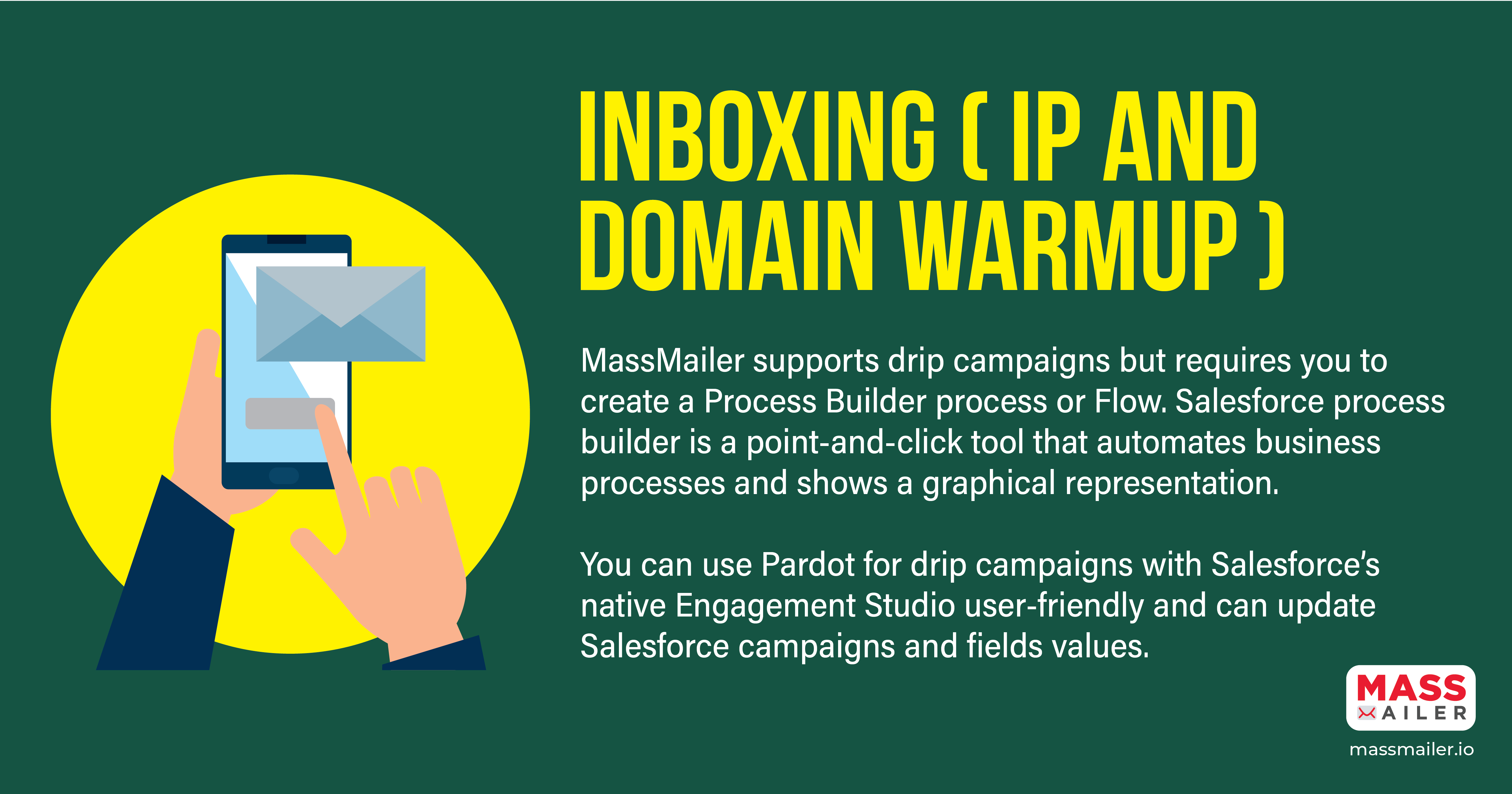
IP and Domain Warmup – MassMailer vs Pardot
Conclusion:
Both MassMailer and Pardot are feature-rich in many aspects. Based on your nature of business operations, you need to see your focus areas and business needs before you make a choice.
If you see a rapid expansion of your business in the short to medium term, Pardot can be a choice for wider marketing automation along with the focus on emails. On the other hand, if your marketing focus is email, MassMailer can be a better choice.
Between both the applications, we suggest you can choose one with the features you really need before taking the leap.
9 excellent examples of email marketing campaigns
Email Marketing is an important component of marketing. It is a rewarding strategy that boosts sales, earns new customers, and helps in retaining them.
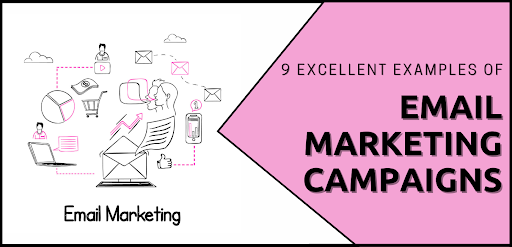
Email marketing generates the highest ROI compared to any other marketing strategy.
According to Campaign Monitor, “AN EFFECTIVE EMAIL MARKETING CAMPAIGN ROI IS 4400% – RETURNING $44 FOR EVERY $1 SPENT ON MARKETING.”
Email marketing campaigns can fulfill different purposes when designed with a certain goal in mind. It can help you with:
Traffic Generation
— More traffic equals more conversion. Email is a powerful conduit for promoting the high-value content you publish and drive traffic to your website.
Brand Awareness
—Every subscription may not result in a sale. In such cases, you can use email marketing to remain engaged with the prospect by providing relevant content. This way you will always remain at the forefront.
Nurturing Leads
— Identify the leads with the highest buying intent and create personalized and conversion-focused emails that can nurture your leads towards a sale or make them sales-ready.
Revenue Generation
— When planned properly with a clear goal in mind, the revenue generated from your emails can multiply. You can try different approaches such as creating attractive emails, sending target emails to specific audiences, etc.
- You can push upsell (a more expensive purchase) and cross-sell ( relate purchases to the primary purchase ) chances to your existing clients through email marketing campaigns.
- You can construct campaigns to capture sales conversions from leads who are on the verge of making a purchase decision. For example, you may create “abandon cart” efforts to regain missed sales conversions.
- You can also give offers that can urge your customers to purchase from you. For example, you can offer a discount coupon valid for a limited period such as a 30 percent discount valid for 7 days.
Hence, email marketing would be the best shot for a business that wants to build a good relationship with its clients, increase its conversion rate, and grow faster.
All the above achievements are possible once you know how to create an effective email marketing campaign that stands out from the hundreds of emails being shoved into people’s inboxes every single day.
The success of email marketing campaigns depends on how well you plan and craft your campaigns. Here are a couple of things you should focus on:
Understand your target audience.
If you water down your message to make it applicable to your entire audience, you’re losing an opportunity to create high-value, specific, relevant material that speaks directly to the receiver.
Understanding your audience and using email segmentation & personalization to guarantee you’re sending the right email to the right people at the right time is the key to an effective email marketing campaign. If you can incorporate this into your approach, you will be able to be more creative and particular with your emails.
Establish a campaign goal.
Even if email marketing is a low-risk, high-reward activity, you don’t want to send emails just for the sake of it. In other words, simply crossing anything off your to-do list will not make you successful.
Instead, be deliberate about what you want to achieve out of your emails since this will help you create the right emails for your target audience.
For example, if you want to nurture leads from MQL to SQL, you can establish a segment of MQLs and generate instructive and convincing content to take them closer to a purchasing decision.
Be smart with the subject lines.
First impressions are important. Subject lines are a small yet very important part of emails. People judge an email by the subject lines. It urges people to click on your email and read it.
If you want your email to be clicked on, opened, and read it is critical to come up with smart, creative, clear, and crisp subject lines that grab people’s attention at once.
Create good content:
Content is the king of your marketing campaigns. If you want people to pay attention to what you are saying and go through your entire email then you need to develop content that is clear, crisp, and to the point. Also, have in mind that the way you end an email can increase the reader’s attention and a will to keep engaging and communicating with your brand in the future.
Good content with good visuals will be the best way to win over your audience and make them stay with you.
Use Call-To-Action (CTAs):
Remember to focus on what you want your customers to do next. CTAs guide the customers to take the next step, which increases your email campaigns’ effectiveness.
The purpose of the CTA will differ depending on the customer’s journey stage and what you want to achieve with your email campaign. You might simply want to engage them more with another piece of content, or you might want to persuade them to make a purchase and direct them to your app or website.
A good email marketing campaign typically features one main CTA with the option of a secondary CTA. The CTA buttons embedded should be clear and powerful, without overpowering or detracting from the message itself.
Update your leads:
People often forget to check if their leads are valid or not before sending out their email campaigns. This leads to the low performance of any campaign. Validating and verifying your email list filters out any invalid, dormant, temporary, suspicious email addresses, helping you ensure that your emails are reaching the recipient’s inbox and reducing your bounce rates making the success rate of your campaigns higher. You should validate your email list every few months to see how much value the list holds and if it is worth sending out emails to those email addresses.
You can use email validation tools to maintain your email list hygiene. It will save you from unnecessary costs, bad sender reputation, and low deliverability rates.
Test your emails to be compatible on all devices:
Once you are done with your emails, double-check them before sending them out. Your emails should be suitable for all devices like desktop, tablet, and mobile on which users are likely to read them. Try sending test emails to your colleagues and across different devices and email clients to ensure they are ready to be sent to your prospects and customers.
Now that you know how to skillfully wield a campaign, it is time to learn from the marketing experts. Here are 9 brilliant examples of email marketing campaigns crafted by the talented marketing gurus that you can inspire from before getting started with your campaign:
-
Welcome Campaign by Michaels:
Welcome emails are important and people expect one from every brand they sign up for. The relationship between the brand and the customer starts with these emails.
Michaels has started with a Thanks email to express that they value their customers joining them. They have spoken about what their customers should expect from them in the future and how they can improve the customer experience by learning about their preferences. Michaels has also cleverly grabbed the opportunity to pocket a sale by offering a discount coupon in their welcome mail.
-
Promotion Campaign by loft:
Loft created an extremely basic yet fun email marketing design with a banana graphic and simple text saying “Don’t Let This Sale Slip Away.” You might slip on a banana, but don’t let this opportunity slip away. It is a great way of notifying people about the running sale: fun and at the same time creating a sense of urgency!
Such humorous emails are often liked and remembered by the customers.
-
User Re-engagement campaign by Dropbox:
User re-engagement campaigns are important to show that you value your customers and want them to be with your brand. Dropbox created a super cute “ come back to us” email to simply remind people that they exist and how they can be helpful. The copy is short, simple, and in no way intended to intrude.
In such emails, an incentive can be added at the end to remind people to come back to using your services. You can also add a limited period offer or discount especially for them.
-
Product Renewal Campaign by Warby Parker:
In this email, the folks at Warby Parker clearly showed that nothing complements a new prescription than a new pair of glasses. This email is a very good example of personalization based on the need of the specific customer.
The email used the subject line “Uh-oh, your prescription is expiring” which is smart and urges the recipient to go through the email.
The email also co-markets about consulting an optometrist in case the recipient is not sure where to renew their prescription from, which is again a very clever tactic to get your customer closer to making a purchase.
-
Promotion Campaign by Litmus:
This is a great example of using animation for making an attractive email campaign.
The swipe motion employed provides an “under the hood” look of the tool that is eye-catching and motivates the receivers to go through the rest of the content. The copy of the email is also to the point and crisp stating the purpose of the email clearly.
The color, content, and the design of the email used work great together making the campaign interesting and a success.
-
Triggered email campaign by Topshop
Triggered campaigns are a series of automated emails generated in situations like abandoned carts, any content download, any purchase, etc. Triggered campaigns are responsible for generating 75 percent of email revenue.
Topshop here has set an example of how to remind your customers about their unfinished orders subtly and smartly. The line “We’ve got your bag!” has been cleverly crafted not only to remind customers about the abandoned items but also to demonstrate that they have kept their luggage safe all this time.
The content of the email template has also been kept simple and short with the list of the items added to the cart.
-
Update Campaign by Trainline:
This simple update trigger campaign by Trainline is one of the best performing campaigns in the industry. ‘Trainline” is a travel company that informs its customers about their approaching trip by reminding them to pick up their tickets, providing weather information, and providing other crucial information.
They also encourage users to download the app and keep up to date with new information. This is a great way to market their app when there are high chances that people will download the app for a better experience and receive updates easily. This form of interaction raises the brand’s worth in the eyes of the customer.
-
Newsletters by Trulia:
Newsletters are one of the best ways to gain customer’s trust in you by becoming their source of knowledge. Trulia is an expert in the real estate business and it shows clearly from their emails.
The subject line used in this campaign – “Why aren’t millennials moving?” is to the point and intriguing. It makes the readers eager to learn more about the subject leading to a high open rate.
Even Though Trulia won’t benefit from the readers who are not going to move it still has an upper hand. The informational newsletter will allow them to be at the top of the reader’s mind and showcase they are up-to-date with the affairs of the industry.
-
Date Trigger Campaign by Overstock:
Many times a customer may provide incomplete details while setting up their account or in some cases, their provided phone numbers/ email addresses may no longer be in use. It is important to stay updated with your customer’s personal details to be able to reach out to them in the right way, and also for personalization & segmentation the personal details of the user like their date of birth, location, preferences, etc are required.
Here, Soybu has used one of the best ways of advising their customers to update their profile details by offering freebies, discount coupons.
Soybu skillfully entices customers to update their profile information by promising them a special surprise on their birthday, and who doesn’t like a gift on their birthday? This is a great way of retaining loyal customers and gaining new customers as well.
These were some of the best-performing email campaign examples to learn from. Now you can sketch out your own brilliant email campaign with all the help of these inspirations and tips.
Aastha Shaw is immersed in creating & developing content at Clearout & ClearoutPhone, SaaS products used for email verification and phone validation respectively. She has been creating content for websites, blogs, and videos for marketing. You can reach out and connect with Aastha on LinkedIn.
The Benefits And Importance Of List Building And Email Marketing
The Benefits And Importance Of List Building And Email Marketing
Courtesy post by: Jasmine Barnes
Look up email marketing on Google or anywhere else online. You’ll often hear people talking about how it’s the most effective method you can use to sell products or services to an online audience.
However, many online business owners don’t know or simply underestimate the power of email marketing.
With that in mind, we’ve put together the following blog post to help illustrate the benefits and importance of list building and email marketing.
Let’s jump in!

Low-Cost Marketing
One of the most obvious reasons that make email marketing so important is that it’s considerably more cost-effective than other forms of marketing.
Even when you include the cost of a premium membership with an email marketing software provider like MassMailer, MailChimp, email marketing is still more affordable than creating brochures or pamphlets, renting ad space on billboards around town, or even advertising on social media.
Plus, there’s typically no limit as to how many people you’ll be able to send your emails to, so your brand exposure is potentially unlimited!
Subscribers Want Your Emails
Another great reason to invest some time and effort in email marketing is that email subscribers must opt in before receiving anything from you.
Typically, opting-in is done when a website visitor inputs their name or contact information in a lead capture form on your website.
When this happens, that person is essentially saying that they want to hear from you and that they’re happy to receive email communication from your business or brand.
Because of this, if you’re trying to sell products or services, you’ll have considerably more luck since your audience will already be interested in what you have to say!
Flexible Marketing
Just like blogging and social media marketing, email is also a flexible and versatile form of marketing.
In other words, whether you’re launching your brand for the first time, promoting a new product, or simply sending out information about the latest news in your industry, email is a great medium to do so.
Plus, by using platforms like MassMailer, MailChimp, you’ll be able to customize your emails with your brand name and logo, which can help make your brand even more memorable.
You can create custom graphics and logos here:
Personal And Direct Messaging
Unlike publishing a blog on your website or posting on social media, email is simply more direct and personal than any other form of marketing.
Essentially, email marketing is a one-on-one approach where you can communicate directly with your subscribers.
Depending on the type of lead capture form you use, you can even capture information from subscribers, including their first and last names.
You can then step things up a notch by personalizing your email communications with this information, which will make your recipients feel like you know them by name.
In turn, when you build this type of connection with your audience, you’ll have a much better chance of making that next sale!
Data, Conversions, And Better Sales
Plus, anytime you have new news about your brand, its products or services, you can instantly send out a mass email to your subscribers, making it easy for them to click through to your website and follow your calls-to-action.
Therefore, email is a great way to inform people about your product offerings, nurture your customer relationships, or even check in with your existing customers who haven’t purchased in a while.
Additionally, with email, you’ll also be able to collect information about your audience and how effective your strategy is by testing different subject lines, email copy, and template designs, all of which can significantly impact the effectiveness of your email campaigns.
The Importance Of Email Marketing
Although SEO, blogging, social media marketing, and video marketing are all popular and effective ways to market your business, email is simply more direct and more personal, which means that it’s a better way to sell!
So, what are you waiting for?
Add a lead capture form to your site, start collecting emails, and make the most of your online promotional efforts today!
Email Marketing Best Practices for Financial Services
For Financial services, email marketing is designed to support customers at all levels of the customer journey. For the most part, many financial services are services that businesses and individuals are going to seek out at specific stages of life. Further, many businesses and individuals already have established financial services, and must be coaxed into shifting to new service providers.
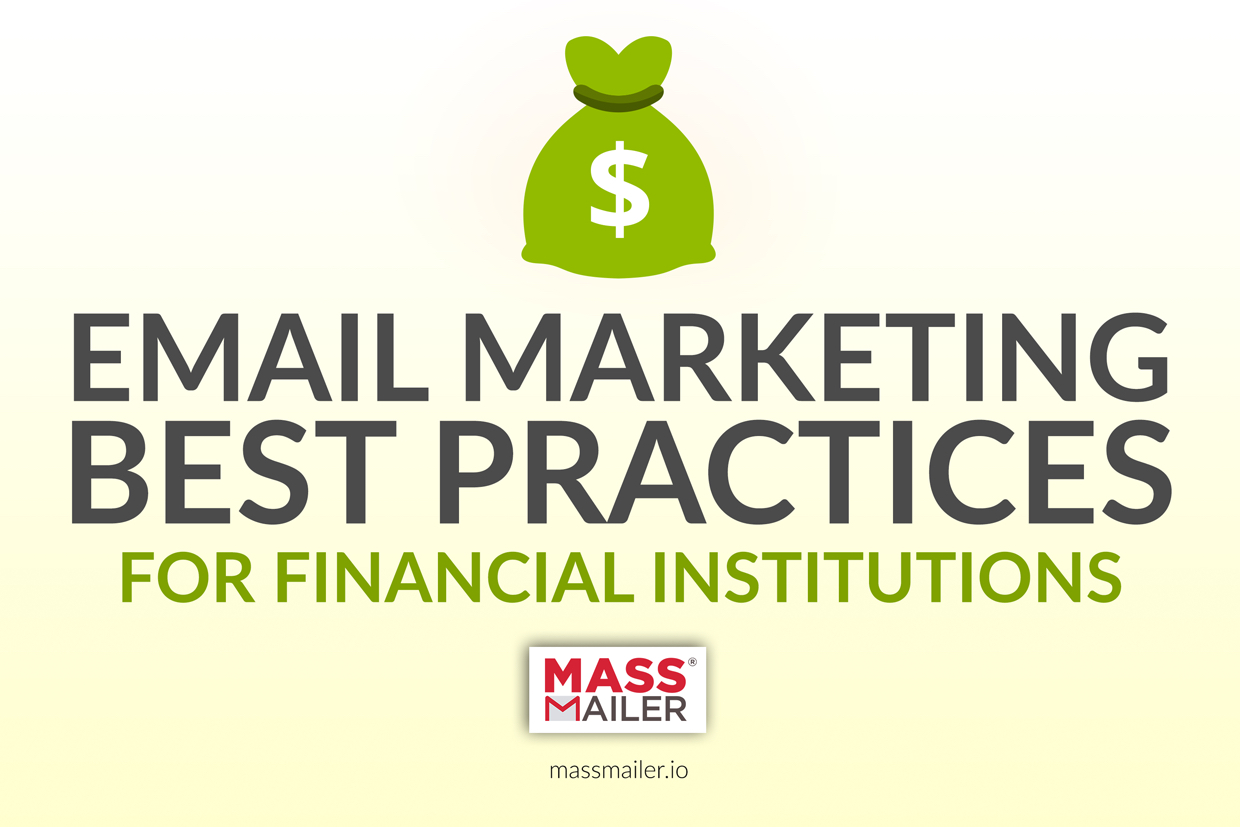
Identifying Leads for Email Marketing
Identifying and scoring leads for email marketing is often best done through Salesforce, but Salesforce has daily email limits and other email limitations per day. Even local financial institutions will often find themselves exceeding these email limits when sending out mailers to their prospective leads. Services such as MassMailer.io can be used to get around these email limitations, letting your institution connect directly with all of your best scored leads.
The Best Practices When Sending Email
Provide valuable content. Financial services need to establish their authority within the industry; customers are looking for someone they can trust. In many sectors, such as the investment sectors, customers are incredibly savvy. They need content such as white papers and blog posts rather than promotional mailers.
Make it easy to drop out. For your mailing lists to be effective, emails need to be distributed to customers who are truly interested. By making it easier to drop out of your newsletter, you increase your newsletter’s engagement.
Avoid “spammy” phrases. Cash loans, lending now, personal loans all of these can trigger email blacklists and make it difficult for your email to get delivered. Over time it can even make your domain’s reputation go down.
Always have a call-to-action. Whether it’s just following your blog for more information or actually putting in an application, the customer should know exactly what the next step is.
Connecting With Potential Customers
Email marketing strategies for financial institutions must often focus on identifying buyers before they are about to invest in a financial product. Auto loans, home loans, business loans; all of these generally begin with research. Thus, financial services need to use their marketing data to identify customers who are about to make purchases, such as customers who have looked up this relevant information in the past.
Salesforce campaigns are able to track the contacts that customers have made to indicate the customers that are most likely to make a purchase or be interested in a specific product. By sending out email content that is valuable to them, a financial institution can support them on their journey. Residential and commercial loan companies, for instance, may want to give customers information on improving their creditworthiness or finding the perfect property.
This builds up a relationship through email before the customer is ready to commit. When the customer finally is ready to engage with a financial product, they will have an already established relationship.
For a successful email marketing strategy, financial services need to be able to take advantage of leads, develop relationships, and analyze their data. For all of this, MassMailer.io can help. Contact MassMailer.io today to find out more about how Salesforce campaigns can be integrated directly into an effective and comprehensive marketing platform.
Email Marketing Best Practices for Educational Institutions
Email is one of the most important tools an educational institution has at its disposal. Not only does it help you communicate directly with students, alumni, and professors, but it’s also an excellent opportunity for marketing. Educational institutions can reach out to former students for donations, prospective students for enrollment, and potential donors for charitable events.
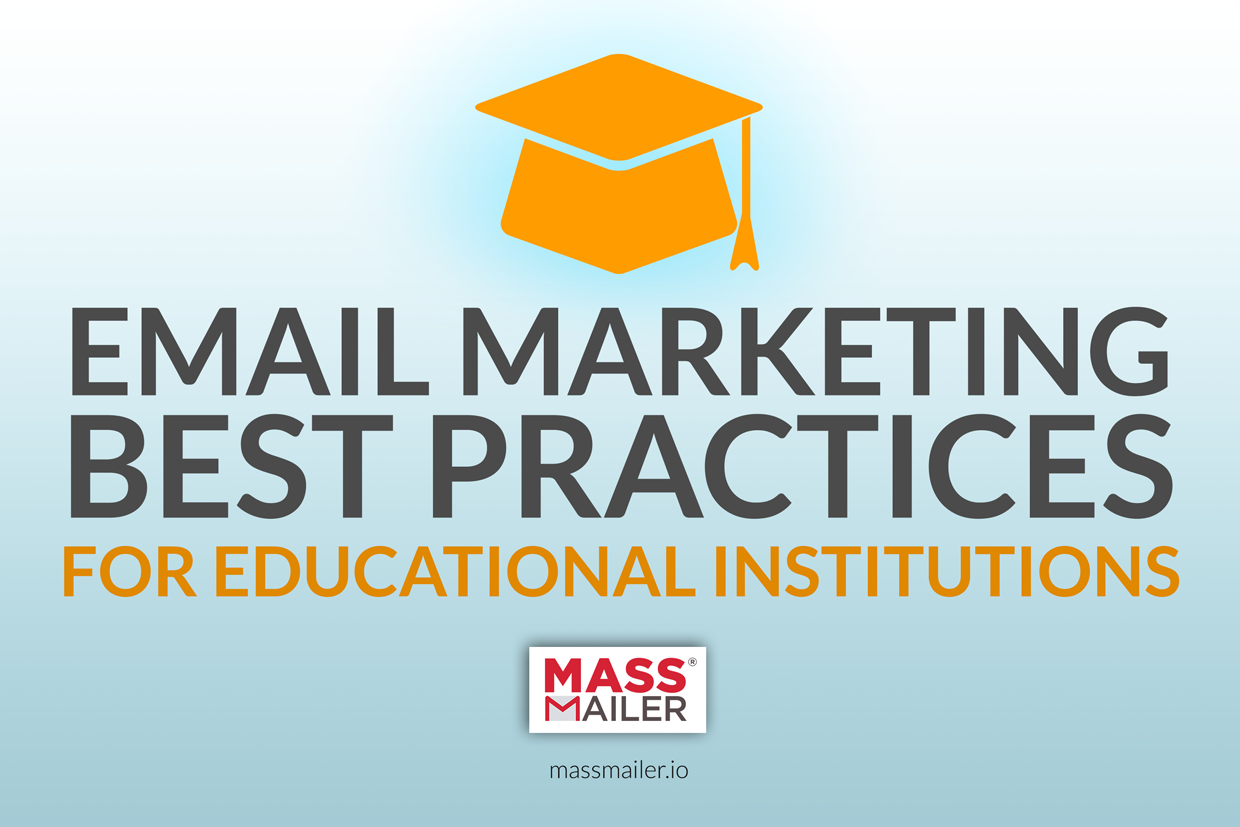
Maintain Your Mailing Lists
Educational institutions tend to have large, cumbersome email lists. Some of these accounts may have been abandoned by former students long ago; others may be for now defunct vendors. Paring down your organization’s email lists may make them appear to be smaller, but it makes them more valuable. The larger percentage of active accounts on a list, the higher the potential for engagement. Having large, inactive lists will only consume resources and make it appear as though engagement is lower than it actually is.
In addition to removing inactive accounts, it’s important to:
Make it easy for someone to opt out of emails. Of course, current students and faculty cannot but alumni, vendors, and donors should be able to. If someone truly wants to opt out of the email list, they aren’t likely to engage. If they aren’t able to opt out, they may instead opt for marking your emails as spam, which could hurt future deliverability.
Continue to aggressively acquire new contacts. Whether you’re purchasing curated email lists or simply funneling prospective students and teachers to your organization’s newsletter, it’s important to always be acquiring new contacts for your campaign. Once contacts have been created, leads can be generated.
Provide Timely, High Quality Content
Whether they’re alumni or donors, most people follow educational institutions to keep current on events and community news. By providing the content that they’re most interested in, you can encourage them to open and read your emails and continue engaging with your institution.
Community updates, course information, event highlights, and local news are all an excellent way to add value to your email marketing. Once a relationship has been built, direct advertising such as asking for donations for fundraisers will be more effective.
Pay Attention to Your Limits
There are three limits you should consider when you start a marketing campaign:
Frequency. Educational institutions can often get away with fairly frequent messaging, as they are not in a “high risk” industry and are generally less prone to trigger spam filters. Nevertheless, recipients may decide to drop a newsletter if it’s too frequent. Most educational institutions shouldn’t exceed one email per day per recipient, and they should try to remain on a consistent schedule.
Volume. Educational institutions contact a lot of individuals, and this means that they may run into Salesforce daily email limits. Services such as MassMailer.io make it easy to get around these limitations, letting you send la3rge volumes of email at once.
Size. Apart from per day Salesforce email limits, there are also some other forms of Salesforce email limitations, such as the actual volume of data that you’re allowed to send. Salesforce requires that attachments be under a certain size; you’ll need a service like MassMailer if you want to send larger files.
You can begin email marketing for Salesforce and completely integrate your Salesforce campaigns with third-party add-ons and tools. These tools make it easier to avoid any potential limits while still taking advantage of Salesforce email tracking and analytics.
For an educational institution, email marketing is all about making a connection and keeping relevant. As long as you can keep your clients interested, you’ll have a valuable resource that you can reach out to when fundraising, running events, and finding new students. For more information about running an email marketing campaign (and to get started with your educational marketing plan), contact the experts at MassMailer.io.
What nonprofit marketers need to do to succeed in the Email Marketing
Nonprofit marketing is a different breed of animal from many other industries. Much of the marketing involved in nonprofit enterprises involves acquiring and scoring leads and maintaining a connection to existing donors. Email marketing for Salesforce, in combination with tools such as MassMailer, can make it easier to develop a consistent and effective marketing strategy.
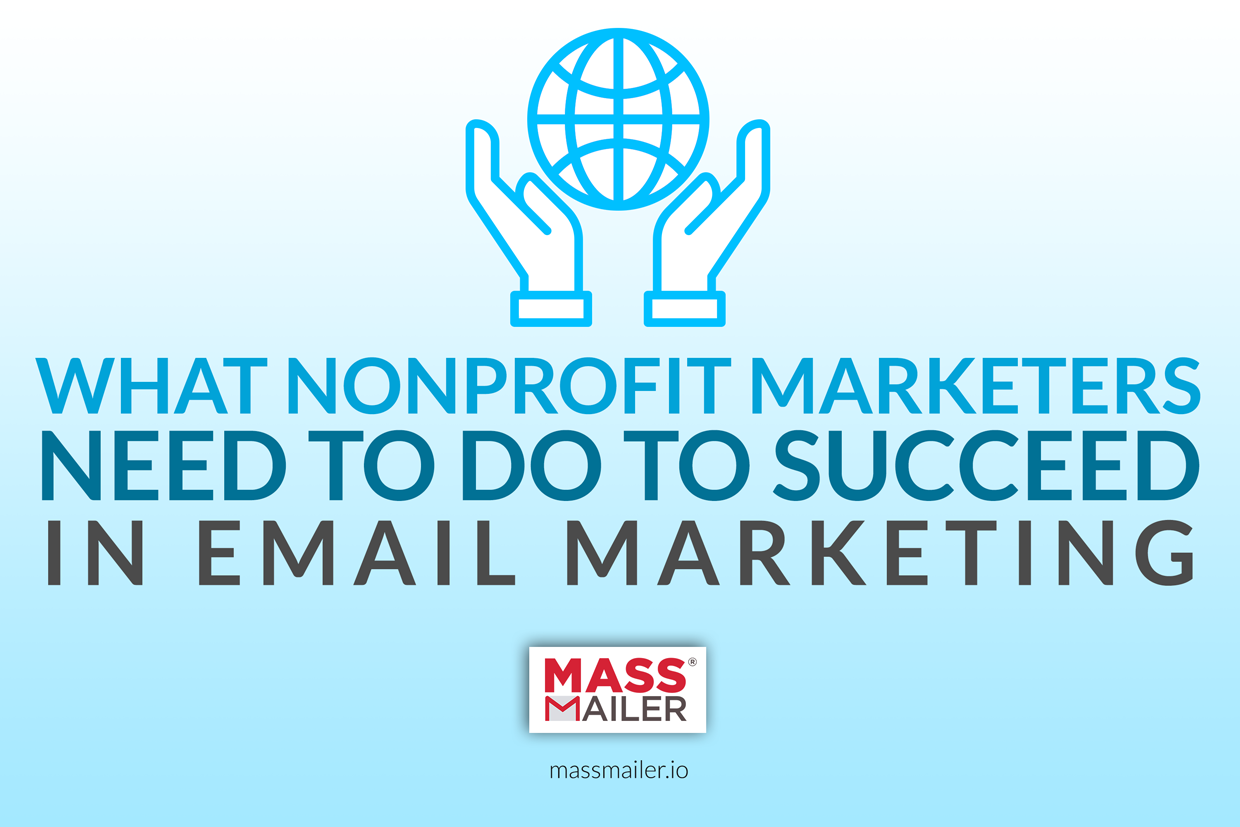
The Unique Needs Non Profit Email Marketing Strategies
Nonprofits need to be able to identify leads that are most likely to engage with the organization. This often requires large amounts of data analysis and lead scoring. Salesforce campaigns can use data collected over time to score existing leads, but nonprofits still need to be able to reach out to new individuals.
Nonprofit organizations regularly need to complete fundraising initiatives, meet metrics, and build their relationships with the donors and volunteers that have already worked with them. Salesforce email tracking is a way to measure engagement and pursue individuals who have connected the most with the organization.
Building Relationships With Email Marketing
Email on a consistent basis. MassMailer can help an organization develop a schedule and a strategy, so organization contacts are continually reminded of the nonprofit’s goals and initiatives.
Score leads. Salesforce combined with MassMailer can be used to appropriately score leads, so different email strategies can be personalized to the recipient and will, therefore, be more effective.
Maintain a solid reputation. Avoid any blacklisted or “spammy” email terms and try to avoid overly promotional materials; people want to be reminded of the organization’s mission.
Provide valuable and timely data. Update leads about the progress that the organization has made, particularly projects that they themselves have worked on or contributed to.
Integrate your email. Direct leads to social media accounts and other owned media through email, to expand your reach and ensure that they are continuing to engage.
Have a clear call to action. At the end of each email, tell leads exactly what they should do next to find out about the nonprofit’s current project, goals, and initiatives.
Getting Around Salesforce Email Limits
Because nonprofit organizations require so many different points of contact, it’s easy for a nonprofit organization to reach Salesforce email limits. Nonprofit organizations have to contact large volumes of potentially interested leads, in addition to connecting with volunteers, prior donors, and prospective donors. Salesforce has specific limitations on how often emails can be sent, which can interfere with the email marketing campaign.
But MassMailer can be used to get around Salesforce daily email limits, making it easier for nonprofit organizations to keep up with their marketing strategies without having to worry about their email limitations per day. MassMailer also adjusts the limits Salesforce has on other issues, such as attachment sizes.
Nonprofit organizations need to develop out their marketing strategies in a way that lets them build uniquely strong relationships with their potential donors, volunteers, and other participants. Salesforce can be used to create a comprehensive strategy, and MassMailer can be used to remove restrictions that would otherwise make Salesforce difficult to use. For more information, download the trial of MassMailer today.
Why Should You Buy B2B Data Lists to Improve Your Marketing Campaigns?
When you’re launching a business, the first thing you need is new leads. Before you even begin an email marketing campaign, you need to know who to contact. You can either begin sending out your top sales performers to prospect on their own, or you can purchase a B2B data list. But whether this is a good idea for your business depends a lot on your organization and its infrastructure.
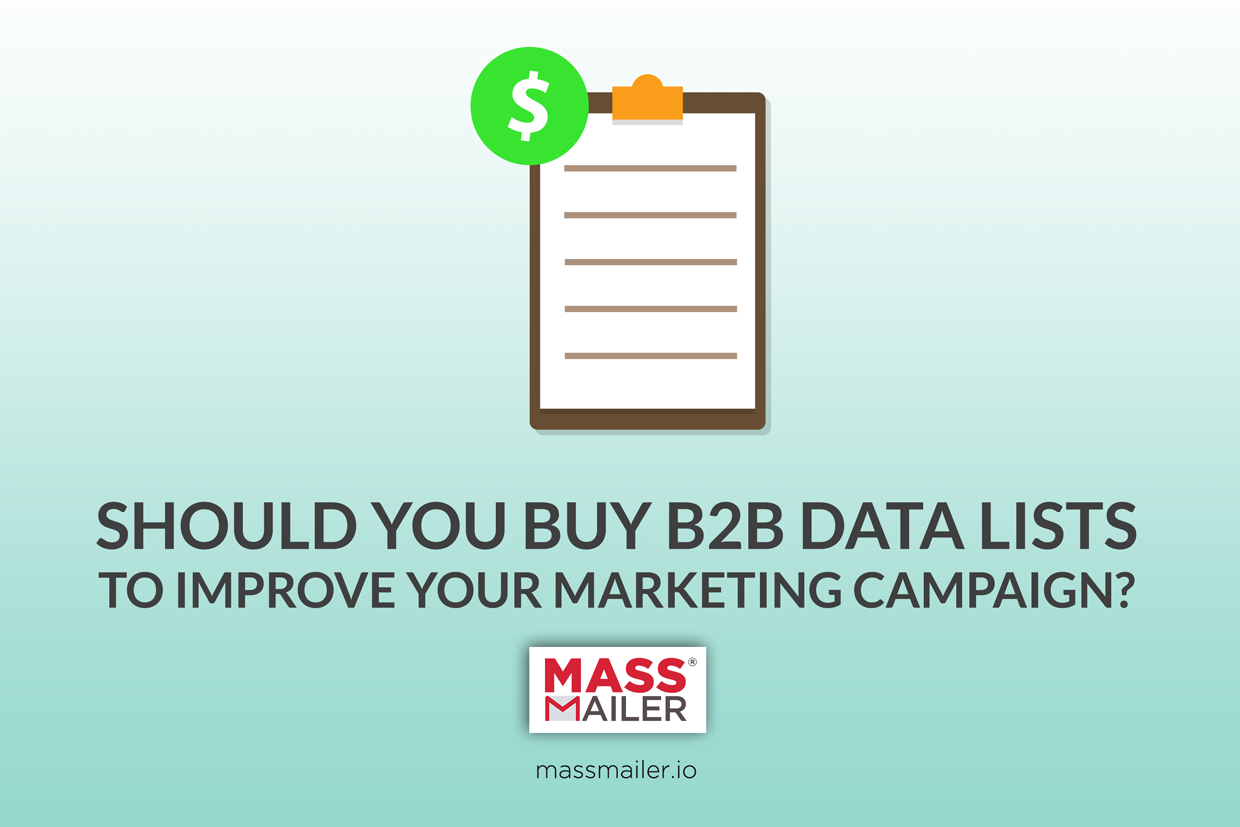
The Advantages of a B2B Data List
A B2B data list gives an organization the foundation that it needs to begin building up their leads. Even a moderate quality data list gives a sales team something to start with. From there, they can contact these leads and begin scoring them. Some companies maintain very high-quality lists that are both up-to-date and detailed… but businesses will end up paying for the quality of that list.
B2B data lists can be automatically imported into many customer relationship management suites or sales prospecting suites, and from there, sales professionals can begin to immediately build up relationships and work towards sales. Many of these data lists have enough information to filter out the leads that are most likely to be helpful, ranging from industry to company size.
The Disadvantages of a B2B Data List
B2B data lists do have some disadvantages, which primarily relate to the source of the data. Purchasing a B2B data list can result in large volumes of unusable data if the list doesn’t cater to an organization’s industry or has not been updated in some time. Frequently a list may not have usable data at all, making it meaningless in terms of B2B sales; this is frequently found in outdated email lists, which are comprised mostly of inactive accounts.
Unlike an actual prospecting platform, a B2B data list doesn’t help with scoring leads or generating useful leads. Instead, it just gives the sales professionals a contact list that they can work from. This list may also be filled with leads who aren’t interested in being contacted. It is possible to potentially buy a list with someone who has placed themselves on a “no contact” registry. From there, it’s actually possible to end up being fined for using a B2B data list, if the contacts on the list weren’t appropriately vetted.
Ultimately, B2B data list is most useful when it is accessed through the use of a prospecting platform or tool. A prospecting platform contains living data that is updated and accurate, rather than a B2B data list that can quickly become outdated. Prospecting platforms will help with not only generating leads but also in scoring them and building relationships with them.
Lead generation is hard. For some businesses, buying B2B data lists can help give the kickstart a business needs. But for others, B2B data lists will be largely useless; no amount of sales training or sales advice can make a useless list effective. Investing in sales prospecting from the beginning will give valuable, well-scored leads who are far more likely to commit. MassMailer is an all-in-one B2B prospecting platform that makes it easy to send emails to prospective leads throughout any industry. Sign up for MassMailer today to get a free trial.
How to Warm up an IP address for Email Marketing
You can’t just jump into an email marketing campaign, even if you’ve already got the perfect email address. Starting an email marketing campaign requires creating a solid strategy. and doing prep work. Part of “how to create an email marketing campaign” involves warming up an IP address. An IP address is what identifies your email server to other email servers. and ultimately it’s what determines your campaign’s reputation. So before you try to do email marketing or start sending to your email marketing lists, this is what you need to know.
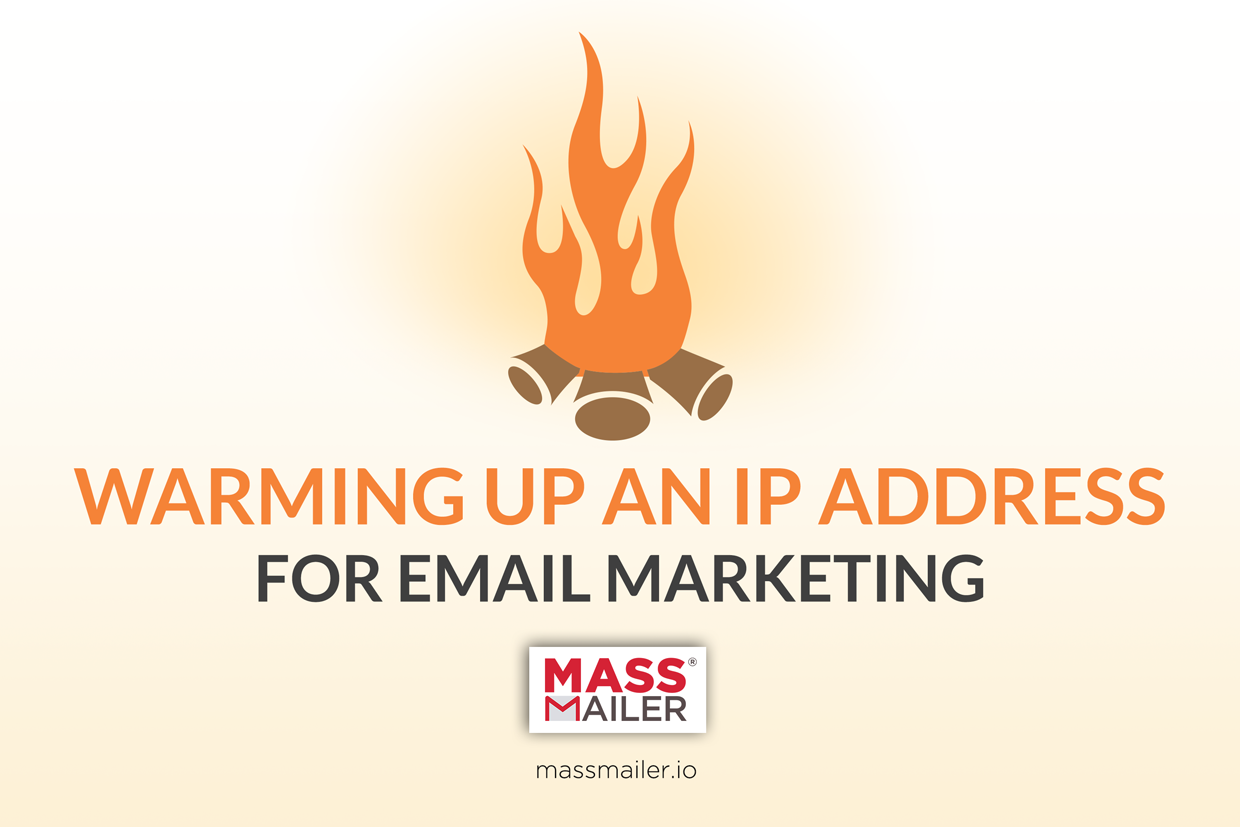
Warming Up an IP Address for Email Marketing
Regardless of which email platforms you use, you’re going to be sending your emails from somewhere. For the best email deliverability, you need to be sending from an IP address that has a good reputation. Email IP addresses are rated based on whether users want to read their emails, whether emails are frequently bounced, or whether their content appears to be “spam.”
When you first start an email address, you may be wondering how to stop emails from going to spam. This is done by building reputation. The more emails you send that are high quality and engaged with, the better your email address reputation will be. You can get emails noticed through an IP warm up.
As emails are sent out and reacted to, the IP address that they are being sent from will gain reputation. Marketing automation can be used to send emails slowly at first and then gradually “warm up” to sending hundreds or even thousands of emails every hour. It’s important to warm up, as otherwise an email strategy could quickly tank the reputation of its own IP address.
Creating an Email Marketing Warm Up Strategy
Send emails at intervals, increasing in volume every hour. An email marketing API or email marketing platform, such as MassMailer, makes it easy for you to schedule these emails to be sent at the appropriate times. You can create an email campaign loaded with the right marketing content and have the mail sending service send out the emails as desired.
Start with a low number. Start with five or ten emails every hour and gradually increase by a percentage every hour. You can send 5, 10, 20, 40, and then 80 emails, all building up to the number that you need to send to meet your strategy. At any time if it appears that engagement is waning, slow your warm up down.
Track your metrics. If your emails suddenly stop being opened or stop provoking conversions, there may be something wrong with the content or the email deliverability. This is when you should take a look at your emails and your user behavior before continuing to “warm up” your IP address.
Follow email best practices. You can either purchase email lists or engage in an email list building campaign either way you need to follow the best practices of sending good content, letting users opt out, and giving a clear and easy to understand call-to-action.
Be careful with email lists. Whether you’re sending out a marketing newsletter or trying to send transactional emails, email lists can be useful. But in order to ensure that your emails are highly deliverable, you should make sure that the lists are easy to opt out of and all the emails are active.
When you warm up dedicated IP addresses you can avoid the spam folder and ensure that your dedicated IP address has a good reputation for some time to come. One of the easiest ways to set up a warm up campaign is through the use of MassMailer. MassMailer is a mail sending service through which you can store and schedule your email campaigns making the process of warming up an IP address far easier.
Stop using these Spam words in Email Marketing
How do email spam filters actually catch spam? For the most part, they’re just looking for specific words much like a search engine would. But unlike a search engine, they aren’t promoting emails with these words they’re blocking them altogether. Email filters look for words that they deem suspicious and then rank emails based on how risky they appear to be. If their risk of being spam is high, a user may never see the email at all. Luckily for email marketers, it’s generally known which words are considered to be red flags.
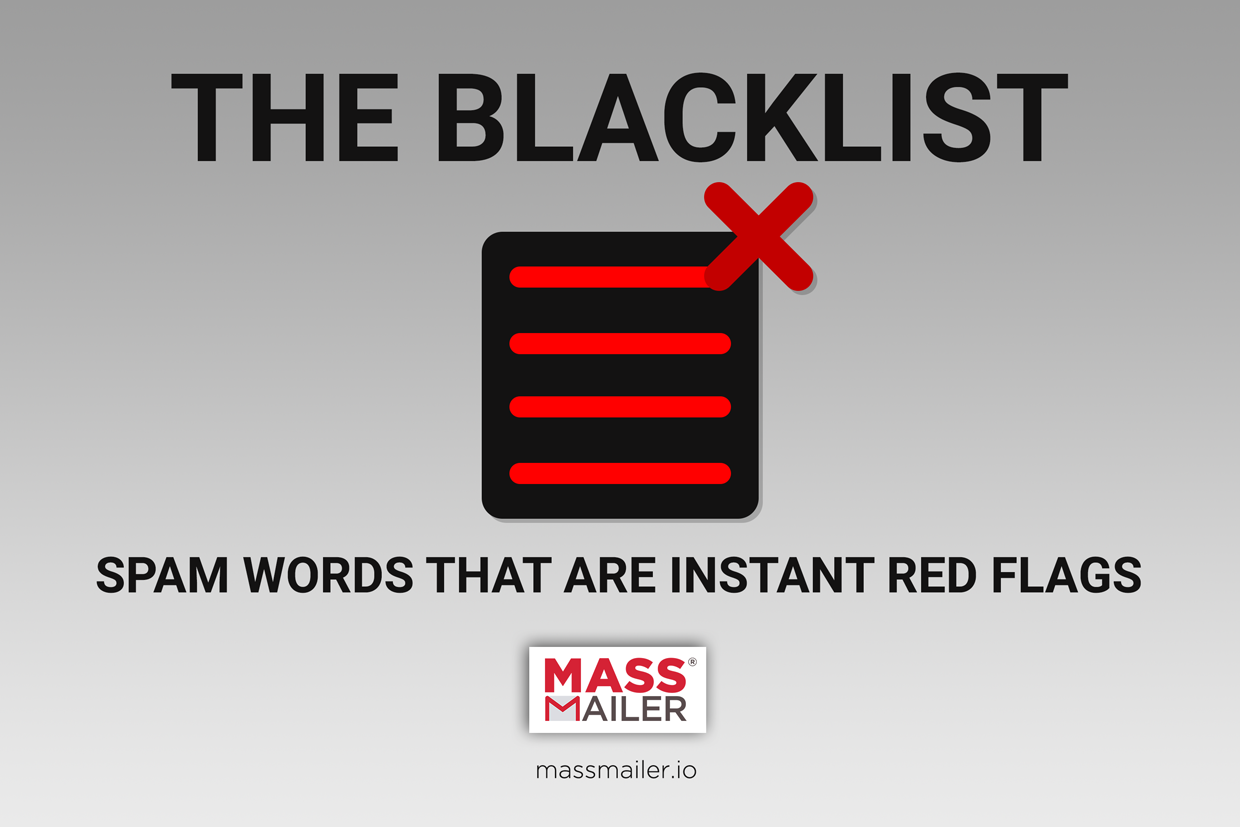
The Obvious Words
These phrases tend to be related to the products that are most often sold by spammers: online biz opportunity, cash cash cash, explode your business, get out of debt, free money, free membership, no credit check, and save big money. These are words that are obviously used by spammers; they are likely to be found in spam emails and even in physical mailers. For the most part, most email marketers don’t need to worry about these obvious phrases they are not likely to use them when crafting legitimate emails. Only a few uses of these types of spam words are likely to block an entire email, making them the most dangerous words to use.
The “Deal” Words
These are words such as: as seen on, cancel at any time, sign up free today, special promotion, supplies are limited, take action now, and buy at any time. Though they are fairly obvious, they can trip up a marketer who isn’t paying attention; even simple terms such as “satisfaction guarantee” can be included in this category. These red flag words are designed to strip out any email that appears to be overly promotional. Emails can be regarding marketing promotions, but they should still be focused on delivering value to the consumer rather than trying to compel an immediate commitment.
The Common Words
So far most of these spam words have seemed obvious. But there are also some commonplace words that you may already be using in your email marketing campaign. These are words that occur with greater frequency in spam emails but on their own are fairly innocuous. These include words such as: buy, order, cheap, discount, insurance, loans, and legal. But it’s important to remember that these words are red flags only with context. Emails with a large number of these words (“buy cheap discount insurance now!”) are likely to be marked as spam, whereas a newsletter for your insurance company or your mortgage lender is not.
Nevertheless, it’s important for any email marketer to still be aware of these words and to avoid them unless strictly necessary. Words that imply a “deal” or that deal with some of the most common spam industries are generally the words that you want to avoid.
The Niche Words
Finally, there are niche words that can trigger a spam filter and that really only occur in a specific industry such as the marketing industry, insurance industry, or healthcare industry. It’s important to reflect upon the common spam words within your operating sector, as these are words that may also naturally come up in your own emails. Examples of these types of niche words include:
- Online dating: meet singles, dig up dirt on friends, score with babes.
- Employment: Additional income, be your own boss, earn per week, work from home, work at home.
- Financial sector: cash bonus, income, investment, credit check.
- Medical: lose weight, reverse aging, life insurance, remove wrinkles.
As you can see, some spam words are fairly common and difficult to avoid after all, what can you do if you’re actually selling life insurance? But by being knowledgeable about the types of words that filters are looking for, you can ensure that your emails are less likely to be filtered out overall. You don’t have to avoid all spam words, but you need to limit them if you’re going to have any hope of reaching your audience.
Email Marketing Do’s And Dont’s
Email marketing is easy to get wrong. Even though it remains the most effective marketing channel – with the highest overall return on investment – open rates and engagement can fluctuate wildly depending on the suitability of the campaign. Email marketers need to be conscientious about their audience and creative about their message to get the most return on their advertising dollar. So without further “ado”. here’s our list of email marketing do’s and don’t’s.
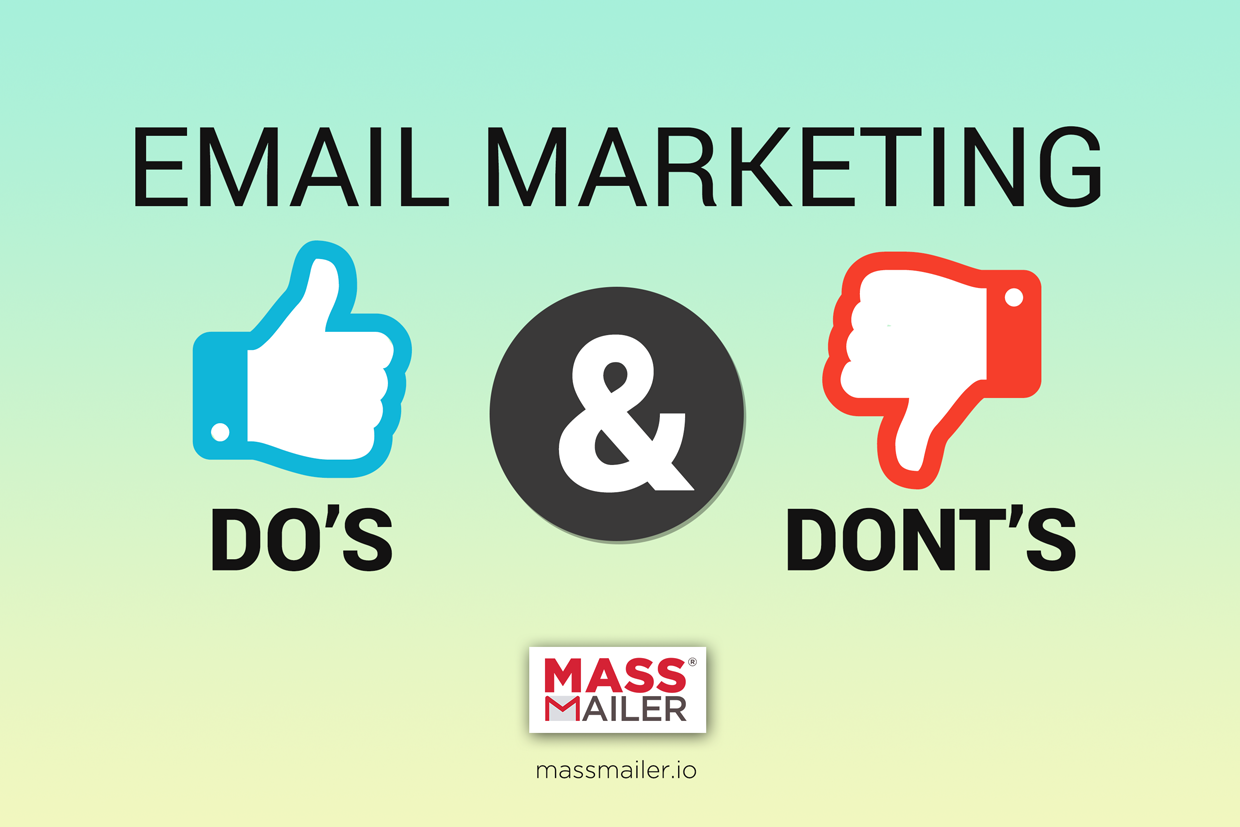
Do’s: Email Marketing Best Practices
Personalize your emails. Emails that you send out should not only be addressed directly to the recipient, but it should keep their behavior in mind. Tailor your emails to your recipient’s interests. Salesforce is able to track your customer’s purchasing habits and prior behaviors so that you can send them targeted emails that are more likely to be relevant to them.
Remain consistent when sending emails. Newsletters should be sent at predictable intervals – such as once a week or once every few days. Too slow and you run the risk of your customers forgetting about your business; too fast and you run the risk of alienating them. Schedule and automate your emails so they are always sent on time.
Use multimedia and rich text. Though you should always add a plain text option, multimedia and rich text will be eye-catching and engaging compared to a plain text email. Caveat: the email must also be optimized for mobile devices.
Have a clear and concise call to action. Your audience must never wonder what they should do next. Every email should end with a prompt, whether it’s to click on a link to learn more or to select a product to purchase.
Make sure you have an email marketing strategy in place to increase conversion rates. Ensuring that your email marketing campaigns are working is not only cost-effective, but can also drive more traffic, leads, and eventually sales.
Don’t’s: Email Marketing Practices to Avoid
Don’t spam. Email marketing must, above all, be desirable to the customer. Sending additional emails is only going to alienate your audience and make it more likely that they will delete your emails without opening them. Eventually, spamming emails in quick succession will get you blacklisted and that will mean that your emails will automatically go into the “junk” box in many email clients.
Be too aggressive. Email marketing that comes off as too much of a “pitch” is more likely to be ignored or assumed to be spam. Customers are inundated with “Last Call!” and “Buy Now!” emails. Instead, get creative with the benefits that your company is offering.
Put the entirety of the email in an image. An image-based email may seem like a good idea because it will display similarly on every device, but it’s difficult to interact with and can also be difficult to read.
Purchasing email lists. Purchased email lists may seem as though they give you the opportunity to reach a wide audience, but they also aren’t likely to be relevant to your business. Build your contacts from the ground up, or you run the risk of being blacklisted.
When email marketing goes awry, it can cost a lot to recover your reputation. Because of that, it’s usually best to use professional software and tools that are designed to control and improve upon your marketing strategies. When in doubt, remember that it’s always about giving the customer information that they want or need everything else will follow.
Dedicated vs Shared IP Address for Email Marketing
When you’re starting an email marketing campaign, you often need to choose between using a dedicated or shared IP address. A dedicated IP address is going to send only your organization’s data, whereas a shared IP address is going to send data from multiple companies. For businesses just getting started, a shared IP address may be sufficient but for most enterprises, a dedicated IP is preferred.
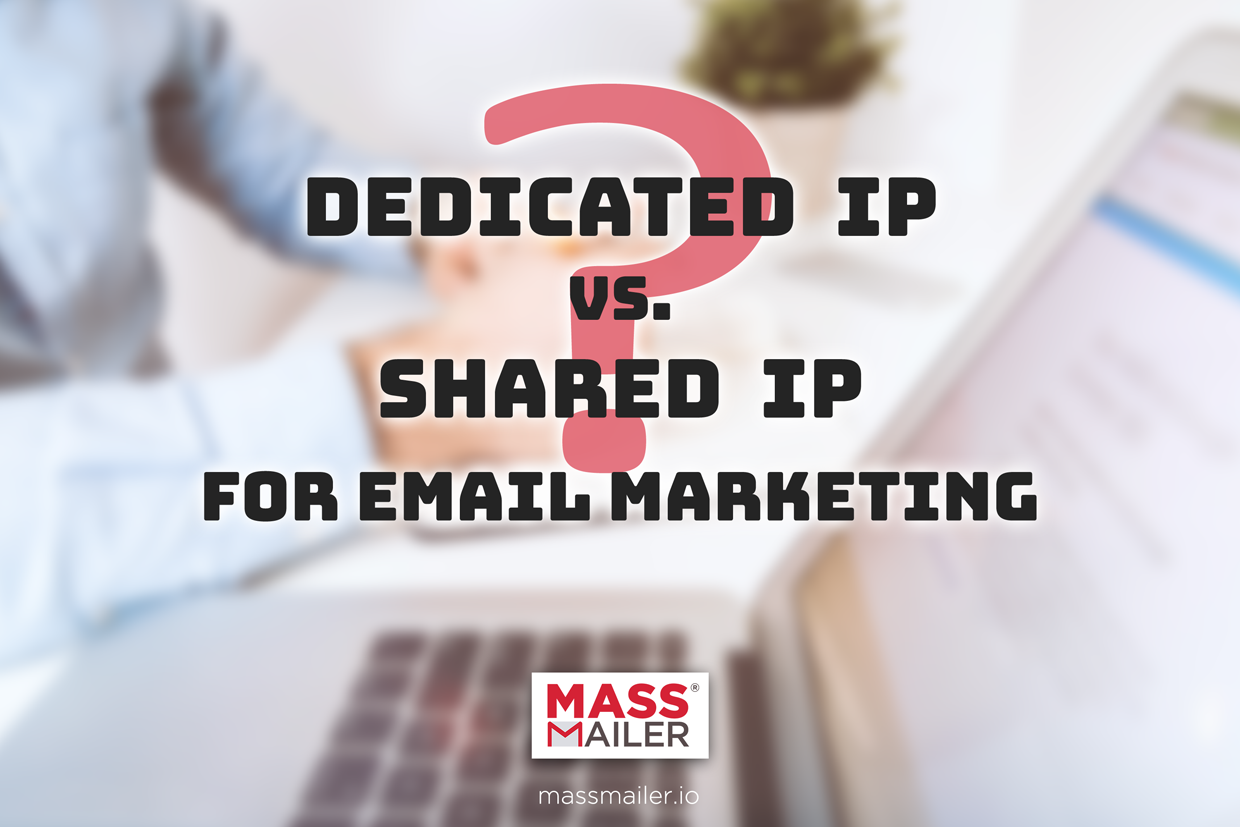
The Advantages of a Shared IP Address
Sharing reputation among startups. It can take some time to develop a reputation as an email sender. With a shared IP address, you’re able to build upon the shared history of multiple companies. This lets you hit the ground running rather than having to spend some time establishing your own identity.
Saving money on an IP address. Because you’re sharing a single IP address, a shared IP address generally isn’t as expensive. This includes not only the IP address but also the shared email server resources.
Maintaining a consistent amount of activity. A shared IP address will be consistently emailing large volumes of email, which means a sudden spike in your own activity isn’t going to lead to you being blacklisted.
Avoiding punishment for any personal mistakes. If you do make some mistakes early on in your email campaign, you are not likely to experience any negative impact because you already have an established, shared reputation. On the other hand, mistakes on a dedicated IP address will be comparatively more serious, and will consequently lead to punishment.
The Advantages of a Dedicated IP Address
Having your own reputation. If your company email reputation is actually quite high, you don’t want it adversely impacted by other users sharing your server. By having a dedicated IP address, your email marketing campaign will let your business grow its own reputation.
Originating from your own email address. A dedicated IP address is going to send information from your own IP address, whereas a shared IP address will display the information of the bulk Salesforce CRM email solution providers. This may not look as professional as desired, especially for larger enterprises.
Using an IP solely for your own traffic. As mentioned, traffic spikes can lead to being blacklisted. But what if a different user on your shared IP address suddenly has a spike in traffic — and a spike in email denials? Once email denials occur, this could lead to your own emails being bounced.
Avoiding punishment for other company’s mistakes. Presumably, an organization interested in email marketing for Salesforce should already be aware of how to sidestep potential issues. A company that has knowledge regarding the rules of email marketing will want to avoid punishment for the mistakes of other businesses, rather than avoiding punishment for their own.
MassMailer offers both shared IP addresses and dedicated IP addresses for email marketing campaigns. Campaigns in Salesforce can use either. When starting to send bulk email from Salesforce CRM, you can begin with a shared IP address but moving towards a dedicated IP is usually preferred in any situation.
Email Marketing Vs Marketing Automation
What’s the difference between email marketing and marketing automation? It can be a bit confusing because one does not necessarily exclude the other. Rather, marketing automation is a set of email marketing strategies and tactics. Marketing automation includes email marketing and provides better, more efficient, and more effective ways to complete large scale email marketing campaigns. At the same time, it can be overkill for smaller campaigns.

Email Marketing vs. Marketing Automation
Email marketing still boasts the highest overall ROI of practically any digital marketing strategy. But there are some downfalls as well: email marketing can be time to consume and difficult to follow up on as it scales upwards. When improperly managed, email marketing may leave marketers with no way to actually secure the leads that they have drawn in, and can ultimately become alienating to clientele. As email marketing campaigns continue to grow, they can be difficult to scale companies can run into daily email limits or simply not have the staff on hand to follow through.
Marketing automation seeks to address these problems. Through marketing automation, the majority of an email campaign functions as an automated process. Landing pages, web forms, and multi-step campaigns are all geared towards securing leads after the consumer has clicked on links. Emails themselves are automated through targeted and tracked systems, communicating with the customer as their relationship with your organization changes and grows. Only leads that are likely to commit to purchasing are forwarded on to sales professionals.
The Advantages of Marketing Automation
Automatically generates and scores leads.
By only forwarding qualified leads, marketing automation can vastly improve the time usage of your sales professionals — making it easier to scale up a marketing campaign. As the email marketing campaign continues, interactions between customers will be logged and analyzed.
Provides a better end user experience.
Users are contacted based on triggered actions and the evolution of their relationship with your organization, thereby sending them more relevant and timely communique’s. Users become frustrated when email advertising does not give them the information that they need or is set erratically or too often. A marketing automation system will only send customers emails on a consistent and scheduled basis.
Integrates with other marketing campaigns.
Marketing automation can automatically connect to social media campaigns and even direct mail campaigns, to provide a holistic advertising environment. The more interactivity a brand has with a customer, the more likely they are to complete a sale.
Guides customers through sales funnel.
Marketing automation can be used to take customers from the initial contact all the way up to purchasing all without the intervention of a live sales professional. This is extremely valuable when organizations are scaling their operations upwards and may not have the time to devote to each individual sale.
The Downsides of Marketing Automation
Marketing automation doesn’t only provide benefits; it can also produce some drawbacks. Marketing automation is complicated and can be costly to set up and run, compared to a simpler email marketing campaign. Many businesses starting out with an email campaign may not require automation immediately or may find it a cumbersome waste of resources.
Email marketing campaigns can become costly and time-consuming to run, especially as an organization continues to grow. Email marketing services such as MassMailer.io, especially with Salesforce integration, can be used to make the process easier and more effective. For more information about how MassMailer.io or marketing automation can work to increase your organization’s revenue, contact us today.

